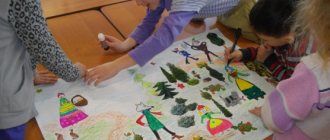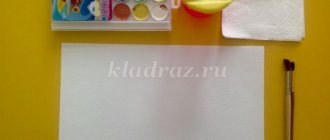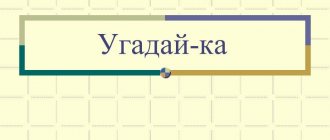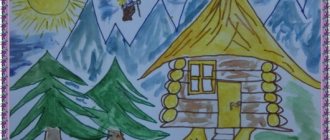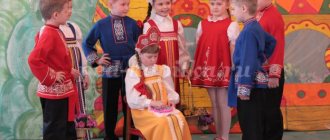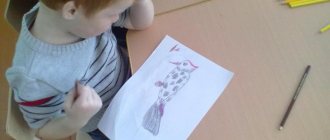Project plan “Earth is our common home”
MADO "Kindergarten No. 460" Nizhny Novgorod region
Project “Earth is our common home”
(school preparatory group No. 10)
Biryukova Svetlana Yurievna
Educator
Project type: research-creative, integrative.
Type of project: group.
Project duration: medium-term (March-April 2020).
Project participants: children of the preparatory school group, teachers, specialists (music director, swimming instructor), parents.
Integration of educational areas: cognitive development, speech development, artistic and aesthetic development, social and communicative development.
Relevance
In the modern world, the problem of human interaction with nature is very relevant. Environmental pollution, the disappearance of plants and animals listed in the Red Book, contamination of water resources - all these are troubles that people unknowingly cause to nature. In order to preserve all the riches of nature, we need to educate our children about the ecological culture. To instill in children an interest in nature, teach them to love and take care of it, you can use many different methods, but the most interesting and acceptable for children of older preschool age, and therefore the most effective, are environmental fairy tales.
Ecological fairy tales carry “ecological information,” that is, they provide knowledge about nature, the habits of animals, and the relationship between people and the animal and plant world. They explain in an accessible form for children of senior preschool age the essence of environmental problems, the reasons for their occurrence, broaden their ecological horizons, and help to comprehend the world around them.
Ecological fairy tales teach:
- explore the world around you;
- foster a sense of involvement in the well-being of nature;
- think about the consequences of their actions in relation to the world around them, about the responsibility for preserving its wealth and beauty.
An ecological fairy tale in an entertaining form helps to reveal complex phenomena in nature and teaches older preschoolers scientific vision.
A characteristic feature of environmental fairy tales is that the environmental content is always real, and fantastic events and images make this reality exciting, memorable and understandable to children.
Based on the knowledge that children receive through an ecological fairy tale, the initial forms of a consciously correct attitude towards nature, interest in its knowledge, sympathy for all living things, the ability to see the beauty of nature in its various forms and manifestations, and express one’s emotional attitude towards it can be laid.
Objective of the project:
Formation in children of senior preschoolers of a system of consciously correct ecological ideas about nature, the foundations of ecological culture.
Project objectives:
- Continue to form a culture of interaction with nature and an aesthetic attitude towards it, clarify and deepen children’s knowledge about the relationship between man and nature.
- Summarize children's knowledge about the rules of behavior in nature.
- To develop in children a cognitive interest in all living things, curiosity, and observation.
- Promote the formation of positive interpersonal relationships, communication skills.
- To cultivate emotional responsiveness to all living things, the desire to preserve and protect nature.
Expected results of the project:
- Conditions that reveal the creative and intellectual capabilities of children, focused on the interaction of all participants in the educational process;
- Systematized ecological knowledge and culture of behavior in nature, as well as knowledge about the relationships in nature;
- Ability to draw conclusions and establish cause-and-effect relationships;
- The ability of children to behave in various situations, using positive experience based on the example of the behavior of fairy-tale characters;
- Interest in natural phenomena and objects, skills of caring for plants, animals, birds, insects;
- Positive communicative experience of interaction with peers and adults.
- Creation of a product of practical activity (didactic games on ecology, books of environmental fairy tales, designing characters of environmental fairy tales, video film with an environmental fairy tale).
Interaction with specialists: music director, swimming instructor.
Project implementation
Stage 1: Statement of the problem
|
Stage 2: Planning (active effective development of the ecological content of a fairy tale)
|
Stage 3: Project implementation
|
|
Main forms of project implementation
| Educator | Interaction with specialists | |
| Integrated lesson on ecology “Man and Nature” | Examination of illustrations and their discussion. Introduction to the “Red Book” Drawing prohibitory signs of nature. Learning the song “What attracts the bird is the height” | Teacher, music director |
| Conversation "Earth Day" | Getting to know the holiday. View the presentation "The Red Book". Listening to the song “Look at this Earth from above. Drawing posters “Take care of our planet” | Teacher, music director |
| Introduction to the author's ecological fairy tale “The Earthworm” | Reading a fairy tale, questions about the content. View the presentation. Creative exercise “Think about what happened next” | Educator |
| Come up with a fairy tale “Grandfather’s Garden” | Reading the fairy tale “Turnip”, questions about the content. Creative exercise “Think about what happened next.” Inventing an ecological fairy tale using a typical fantasy technique (TRIZ elements - a method of finding and resolving contradictions). View the presentation. | Educator |
| Integrated lesson “Indoor flower” or a gift for mom" | The needs of the living - research. Reading poetry. Planting and growing flowers for mothers for the holiday of March 8 (introduction to plant propagation by cuttings) | Teacher and children |
| Creative games | Comparison games: "What common?" (compare the plots of similar fairy tales “Teremok” and “Rukavichka”, “Morozko” and “Mistress Blizzard”), “Who is the cutest in the world” (identification and description of beauties from the fairy tales of Cinderella, Snow White, Sleeping Princess, etc.). Generalization games : “What will be useful on the road” (based on the analysis of magical objects, children come up with helping objects). Simulation games : “Where is whose house?” (children learn to come up with various situations based on schematic images of individual model objects), “Where the hero hid” | Teacher and children |
| Writing fairy tales. Creating mini-books | - fairy tales created by analogy with already known literary works; - fairy tales created on the basis of personal creativity. | Teacher, children with parents |
| Integrated lesson “Once upon a time there was a river” | Excursion on Sunday to the reservoir. Reading and discussion of an environmental fairy tale, experimenting “Let’s Purify the Water” Outdoor game “Sea Figure”. Exhibition of works: my impressions of the fairy tale “Once upon a time there was a river.” | Teacher, children with parents |
| Holiday in the pool "Water Magic" | Distribution of roles, learning dances, movements, games. Reinforcing the rules of behavior on the pond. | Teacher, children, swimming instructor |
| Creation of the cartoon "The Little Prince" | Reading a fairy tale, distributing roles, making scenery, characters, creating sketches, recording on camera. | Teacher and children |
Interaction with parents
- Consultation and survey “The role of environmental fairy tales in the upbringing and education of preschool children”
- Game interaction between parents and children “Write me a fairy tale”;
- Appeal to the experience of parents (from the experience of family education);
- Environmental campaigns “Bird Day” for making birdhouses, cleaning the group’s territory from garbage, “Earth Day” - planting flowers and shrubs.
- Exhibitions of joint drawings of posters, layouts, photographs on the themes “Me and Nature”, “Our Pets”;
- Competitions for crafts made from natural and waste materials;
- Participation of parents in the design of the laptop “Take care of nature” and in the creation of a library of environmental fairy tales.
Project presentation
Exhibition of environmental posters “The Planet in Our Hands”.
Planting and researching indoor flowers “Gift for Mom.”
Creation of a card index of ecology experiments Creation of a catalog of environmental fairy tales with illustrations and drawings by children. Exhibitions of joint drawings of posters, layouts, photographs on the themes “Me and Nature”, “Our Pets”;
Creation of a library of mini-books with environmental fairy tales.
Creation of plasticine sketches based on the cartoon “The Frog and the Ants.”
Making lapbooks on the topics: “Ecology”, “My Garden”, “Hooded Crow”, “Earthworm”.
Creation of the cartoon "The Little Prince".
Replenishment of the collection of videos of the film studio “Fidget” with videos created by parents together with children “A little about everything”, “Ecology of India through the eyes of Alisa Alexandrova”.
Showing a project presentation at a parent meeting.
